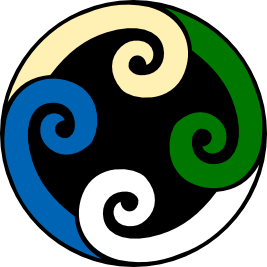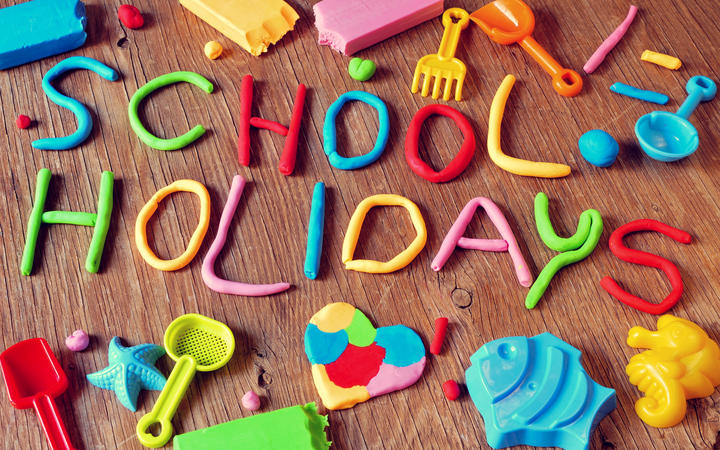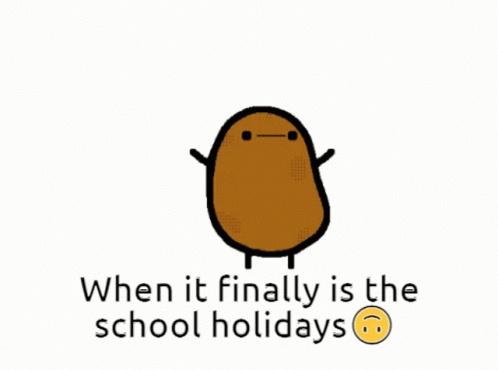9C2 Science
Section outline
-
Kia Ora Young Scientists,
Welcome to Year 9 Science. My name is Mrs. Lindsay and I will be taking you through your Science journey this year. We will be exploring various areas of Science, including Biology, Chemistry, Physics, and Earth Science. Whilst content knowledge is important in Science, its the Science Skills that permeates through all areas of Science, which will be assess in your Common Assessment Tasks (CATs) delivered under exam conditions this year.
Should you need to contact me, face to face is always easiest while in class. Alternatively you can send me an email at alindsay@mhjc.school.nz, but do note that my reply may be brief.
I look forward to co-creating our Science journey together with you all.
Mrs Lindsay

-
Nau mai, Hoki mai!
Welcome back to school. I trust that you have had a relaxing break.
Our context this term is Kaitiakitanga of Taonga in Aotearoa.
This term we will be how we are part of something much bigger... and that our survival may be in peril depending on the decisions that we make.
Success Criteria:
Connect the interdependence of our survival on other living things.
Describe the world around us using ecological terms and give examples (ecology, biotic, abiotic, individual, population, community, ecosystem)
Define habitat and give examples (lithosphere, cryosphere, biosphere, atmosphere, hydrosphere)
Describe how an animal has adaptations so that it is successful in its habitat (behavioural vs physical)Activities:
- Video- Our survival depends on bees
- Compare and contrast factors that will increase and decrease the bee population
- Ecological terms intro- via Finding Nemo, The Lion King, and Happy Feet
- Black mumba vs mongoose- who will win? Describe the behavioural and physical adaptations of each animal and watch them fight!
- Create a NZ endangered animal profile and present back to the class
Further Learning:
All resources are found on Google Classrooms, EP, and Brainpop
EXPLORE / TŪHURA learning intentions:
- We are EXPLORING the natural world around us
- We are EXPLORING the interactions between all living organisms in our biosphere
- We are EXPLORING the significant impact human actions (and inactions) have impacted on the equilibrium of our biosphere
-
Kia ora scientists!
We are continuing our journey to understand the life around us
Success Criteria:
Predict if an animal is a predator or prey by identifying its physical features
Understand physical adaptation of animals from hot and cold climates
Describe predator prey cycles, and how these cycles occurActivities:
- Find similarities in physical adaptation between predators and prey
- Apply Bergman's rule and Allan's rule to animals of hot and cold climates, and explain why
- Create a designer organism, incorporating ecological terms and concepts
- Graph a predator and prey cycle using data
- Game- cat and mice
Further Learning:
All resources on Google Classrooms, EP, and Brainpop
EXPLORE / TŪHURA learning intentions:
- We are EXPLORING the natural world around us
- We are EXPLORING the interactions between all living organisms in our biosphere
- We are EXPLORING the significant impact human actions (and inactions) have impacted on the equilibrium of our biosphere
-
Kia ora Year 9s
Success Criteria:
Identify organisms in ecological terms - carnivore, herbivore, omnivore, producer, consumer, decomposer
Describe how these organisms interact in a food web, and how they are all essential to the strength of biodiversity
Categorise organisms in an energy pyramid
Explain the 10% energy transfer rule through each trophic levelActivities:
- Draw a food web
- Ameoba sisters- Energy pyramids and biodiversity
- Create an energy pyramid of native NZ endangered/endemic species, labelling each trophic label and amount of energy transfer
Further Learning:
All resources are on Google classroom, EP, and Brainpop
EXPLORE / TŪHURA learning intentions:
- We are EXPLORING the natural world around us
- We are EXPLORING the interactions between all living organisms in our biosphere
- We are EXPLORING the significant impact human actions (and inactions) have impacted on the equilibrium of our biosphere
-
Kia ora Scientists!
Success Criteria:
I am able to communicate scientific ideas using scientific models
Activities:
- SNORKELLING AT GOAT ISLAND - identifying marine life
- GOAT ISLAND EDUCATION CENTRE - explaining conservation efforts to improve biodiversity
- Complete Science Assessment 1
Further Learning:
See Google Classroom for resources
FOCUS / ARONGA learning intentions:
- We are FOCUSING on developing our understanding of marine life by identifying different species at Goat Island
- We are FOCUSING on developing our ability to interpret our observations and communicating them using scientific conventions
- We are FOCUSING on identifying factors that improve biodiversity, as well as factors that decrease biodiversity
PLAN & DO / WHAKAMAHI learning intentions:
- We are PLANNING and constructing a collaborated presentation using a scientific model so that we can demonstrate our understanding of marine ecology and its biodiversity.
-
Nau mai, Hoki mai!
Welcome back to Term 2. I trust that you have had a relaxing break.
Our context for Term 2 is:
This is especially true in Chemistry - we benefit from chemical reactions in everyday life.
This term we will be focusing on what the world is made of, the nature of matter and how it behaves. We will also be developing our laboratory skills in a safe and responsibly way, doing heaps of chemistry practicals, and learning how to communicate our finding using scientific conventions.

-
Kia ora Takutai,
Success Criteria:
I can identify fair testing factors
I can write a hypothesis and justify why
I can identify the independent, dependant, and control variables in an investigation
I understand the scientific processActivities:
1. Writing hypothesis
2. Introducing variables
3. Brainpop - Scientific method
Movie, quiz, worksheet, graphic organiser
4. Fair testing worksheetFurther Learning:
All resources are on Google Classroom -
Kia ora scientists,
Success Criteria:
I can draw graphs accurately using scientific conventions
I can identify elements of fair testing and apply them
I can design and conduct a simple scientific investigation
I can communicate the findings of the investigation using scientific conventionsActivities:
- Drawing graphs - worksheet
- Fair testing worksheet
- Investigation - find the relationship between handspan and height/feetspan/cubit
- Create a lab report to communicate the findings of the investigation
- SCIPAD - revision - scientific method
Further Learning:
All resources on Google Classroom
-
Kia ora akonga,
This week we still start our learning around matter and lab skills.
Success Criteria:
I can identify different states of matter, their properties
I can explain their behaviour using particle theory of matter, energy levels, and Brownian motion
I can explain diffusion of gases and liquidsActivities:
- States of matter worksheet
- venn diagrams
- Practical - matter circus
- Brownian motion class demonstration
- SCIPAD 59
- Diffusion worksheet
- Deodorant demonstration
- Practical - tea bag diffusion
- SCIPAD 65
- "Changes of states" worksheet
Further Learning:
All resources on Google Classroom
-
Kia ora scientists,
Success Criteria:
I can draw graphs accurately using scientific conventions
I can identify elements of fair testing and apply them
I can design and conduct a simple scientific investigation
I can communicate the findings of the investigation using scientific conventionsActivities:
- Drawing graphs - worksheet
- Fair testing worksheet
- Investigation - find the relationship between handspan and height/feetspan/cubit
- Create a lab report to communicate the findings of the investigation
- SCIPAD - revision - scientific method
Further Learning:
All resources on Google Classroom
-
Kia ora akonga,
This week we still start our learning around matter and lab skills.
Success Criteria:
I can identify different states of matter, their properties
I can explain their behaviour using particle theory of matter, energy levels, and Brownian motionActivities:
- States of matter worksheet
- venn diagrams
- Practical - matter circus
- Brownian motion class demonstration
- SCIPAD 59
- "Changes of states" worksheet
Further Learning:
All resources on Google Classroom
-
Kia ora scientists,
Welcome back to Term 3.
Success Criteria:
I can use chemistry terms to describe substances in a scientific manner
I can use a range of different methods to seperate different substances
I can use chemistry terms, such as solution, solvent and solute confidently
I can describe all the parts of a distillation kit, including the Liebig Condenser and explain the 5 steps of distillation
I can work safely and responsibly in a labActivities:
- LAB - chemistry terms carousel + worksheet
- LAB - filtration of milk and vinegar + worksheet
- LAB - Separating of rock salt through evaporation
- LAB - Separating mixtures carousel + worksheet
- LAB - Distillation of instant coffee - Teacher demonstration + writing
Further Learning:
All resources on Google Classrooms
-
Kia ora scientists,
Success Criteria:
I can explain how chromatography is used to seperate mixtures using each substances rate of solubility
I can explain mixtures, solutions, and Conservation of Mass using chemistry terms
I can communicate scientific findings of "Solubility" using scientific terminology and conventionsActivities:
- LAB - Chromatography + worksheet + exam style questions
- EP revision - "separating mixtures"
- "Mixtures" worksheet - fill in the gaps
- LAB - "Investigating solubility" SCIPAD 40 + lab report
Further Learning:
All resources on Google Classroom
-
Kia ora...
Success Criteria:
I can design, conduct a fair science investigation, and communicate the findings using several scientific conventions
I can demonstrate my lab skills, my knowledge of lab equipment, ways to improve accuracy and reliability of a scientific investigation, my ability to read scales, read and interpret graphs and diagrams.
I can communicate my understanding of separating mixtures in written formActivities:
- Assessment - EP Diagnostic
- Practical assessment - Making and investigating cottage cheese
- EOT revision - Separating mixtures - exam style questions
Further Learning:
All resources in Google Classroom
-
Kia ora Year 9s
Everything in the universe can be whittled down to energy. Energy is all around us, but how have we learnt to embrace and utilise that energy?
We will begin to explore energy, and how we utilise that power everyday.
Our goal is to be able to describe different forms of energy, and how the transformation of energy creates and enhances our experiences of everyday life!
Success Criteria:
I can recall and apply the Law of Energy Conservation
I can identify different forms of energy and their sources
I can observe and describe the series of energy transformations that occur around me
I can conduct an investigation that demonstrates how much energy is in different types of foods
I can compare and calculate energy efficiency
I can read and make sense of scientific literatureActivities:
- Types of energy - definitions and video
- Create a mindmap of different types of energy and give 3 examples each
- Describe energy transformations of everyday items using a flow chart
- Energy transformation cards - mix and match
- Energy transformation - Kahoot
- SCIPAD 83
- LAB - How much energy is in our food (results and calculations)
- LAB - Energy circus + worksheet
- Energy efficiency calculation and worksheet
- Scientific literacy - SCIPAD 85 - Energy changes inside an engine
Further Learning:
All resources are posted on Google Classroom
-
Kia ora Year 9s
Success Criteria:
I can describe how heat transfers through different mediums
I can describe the properties of different types of heat transfer
Activities:- Draw a Venn diagram comparing radiation, conduction and convection
- Video - Conduction, convection, and radiation
- Categorise everyday examples of conduction, convection, and radiation
- Label and explain all 3 methods of heat transfer when cooking eggs on a campfire
- Categorise properties of conduction, convection, and radiation
- LAB - expansion and contraction through heating and cooling - observe and explain
- LAB - conduction vs convection - observe and explain
- Particle theory of matter - SCIPAD 68-69
- LAB - heat conduction of metals + worksheets
1. rate of heat conduction in metal rods
2. Heating a metal ball
3. Rate of heat conduction of different metals - Brainpop - Waves + activities
Further Learning:
All learning resources are posted on Google Classroom -
Kia ora Year 9s
Success Criteria:
I can describe parts of a waves and explain different types of waves
Activities:- Brainpop - Waves + activities
- Waves notes - worksheet
- The anatomy of a wave - notes and keywords
- LAB - Create a gummy bear wave machines
- Manipulate and describe the properties of a wave by observing a wave machine
- Create and explain longitudinal and transverse waves using ropes and slinky
- Draw waves of varying amplitude and frequency
Further Learning:
All learning resources are posted on Google Classroom -
Kia ora Year 9s,
Success Criteria:
I can describe the properties of sound
I can explain how we hear sounds, using anatomical parts of the earActivities:
- Sound definitions and properties
- Drawing different types of sounds of various loudness and pitch
- Brainpop - Sound + video + activites
- Sound - notes worksheet
- DEMO - Silencing the bell jar
- Video - Cymatics
- DEMO - visualising the compression and rarefaction of sound waves using speakers and water
- Drawing a labeled anatomical diagram of an ear, and describe the function of each part.
- SCIPAD page 90 - hearing sound - scientific understanding and literacy
Further Learning:
All resources are posted on Google Classroom
-
Kia ora akonga
Success Criteria:
I have prepared for my Science CAT this week
I can read and analyse an unfamiliar scientific article, and extrapolate information to answer exam style questionsActivities:
- SCIENCE CAT is on Thursday 16th November, Session 1-2
- CAT prep - ECOSYSTEMS
- CAT Science 2022 paper
Further Learning:
All resource are posted on Google Classroom
-
Kia ora akonga
Success Criteria:
I can identify parts of a reflection on the plane mirror
I have investigated how light we can manipulate reflected light using different types of mirrors
I can describe the effects of concave and convex mirrors on an image, and identify the focal point and point of curvature
I can give real life examples of how different types of mirrors are helpful in our everyday lives
i can describe and explain the refraction of lightActivities:
- Video - Peppers Ghost
- Real life uses of mirrors
- LAB- Investigating angle of incidence vs angle of reflections using plane mirrors
- Light - Mirrors workbook
- Light - refraction workbook
- LAB - Light ray through a block of glass
- LAB - Light rays through a converging and diverging lens
Further Learning:
All resources on Google Classrooms
- Video - Peppers Ghost
-
Kia ora akonga,
Wednesday 6th Dec - Santa Show!
Thursday 7th Dec - Whanau Assembly
Friday 8th Dec - WHANAU DAY OUT!
Tuesday 12th Dec - Prizegiving
-
You made it!!



